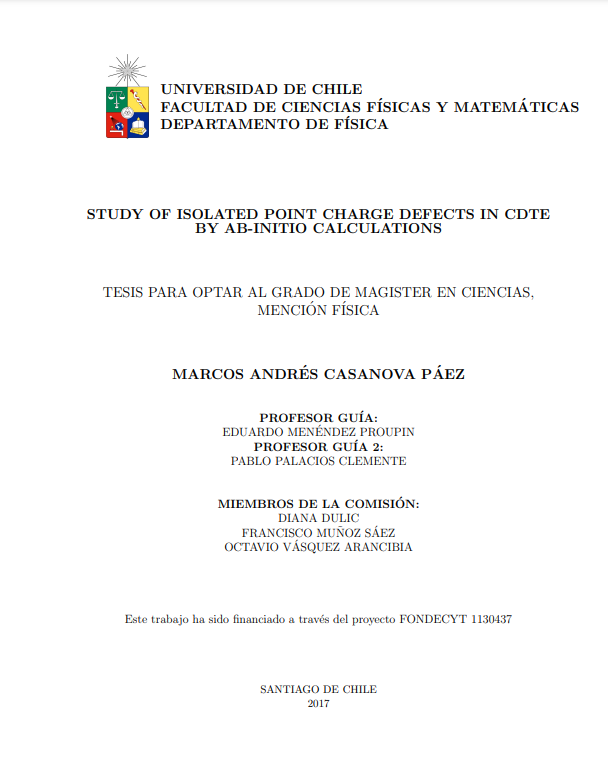Study of isolated point charge defects in CdTe by Ab-Initio calculations
Licencia: Creative Commons (by-nc-nd)
Autor(es): Casanova, Marcos
The generation of energy through solar radiation is one the most promising technologies for a sustainable future. In particular, photovoltaic technologies of cadmium telluride (CdTe) are still far from reaching their maximum efficiency, but have also managed to compete in price with respect to traditional crystalline silicon photovoltaic cells. In the photovoltaic cells of CdTe frontier research is needed, especially focused on atomic scales. However, consider- ing the complexity of the atomic-scale experiments, only the computational studies of first principles calculations reveal and carry out this level of detail. We have performed a quantitative study through first principles calculations for finding and establishing the tellurium vacancy formation energy, VTe. The most common framework for calculating formation energies is known as the periodic boundary conditions approxima- tion (PBC), which periodically replicates a given cell. The problem lies in the selection of the super-cell size, since in charged states there will be a spurious Coulomb interaction between one defect and its periodic replicas which decays as the distance between defects increases. An alternative to this approach is the QM/MM approach. In this approximation we use a fraction of the crystal (called cluster) which is treated at the quantum level (QM region) and then is embedded in a set of point charges that are treated at the classical level (MM region). These point charges are adjusted to reproduce the same effects as an infinite crystal at the center of the cluster. In this work we have used both approaches and we have come to establish more secure values for the tellurium vacancy.
[Santiago: 2017]
Compartir:
Una vez que el usuario haya visto al menos un documento, este fragmento será visible.


